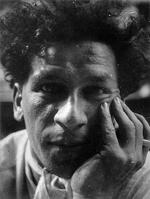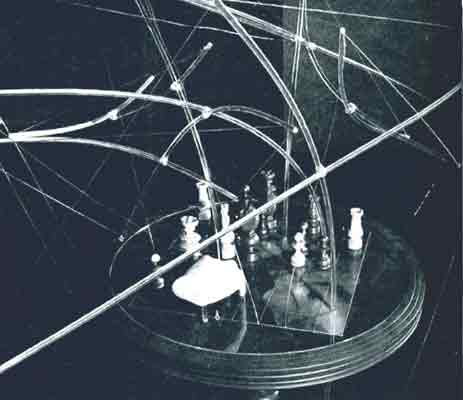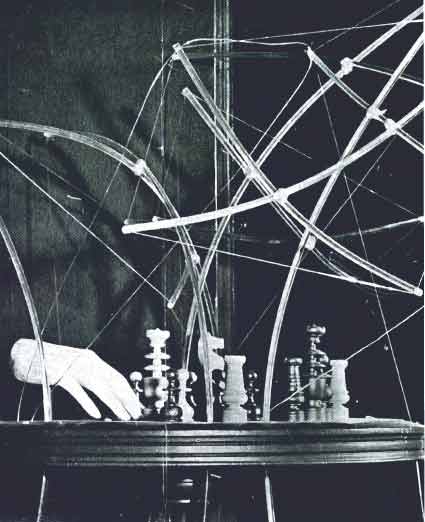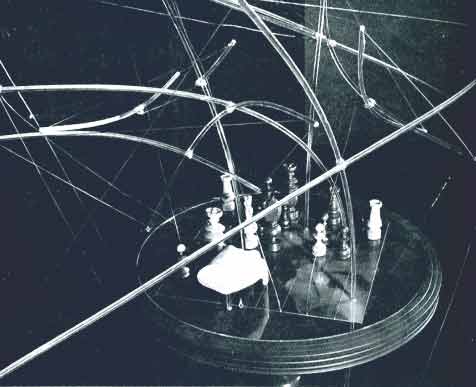|

Xanti (Alexander) Schawinsky
1929
Xanti Schawinsky was born in 1904 in Basel,
Switzerland. He studied art and music in Zurich and design and architecture in
Berlin and Cologne. He then attended Staatliches Bauhaus from 1924-1929
focusing on Architecture and the Stage. As a a choreographer, actor, dancer,
musician, painter, photographer and graphic designer, Schawinsky was the
embodiment of the Bauhaus School. From 1929-1933, he worked as a commercial
artist in Magdeburg,
Germany. From 1933-1936 he worked as a graphics artist for Olivetti Typewriter
Company in Milan, Italy. In 1936 he emigrated to the United States and took a
teaching position at Black Mountain College in Asheville, North Carolina. He
moved to New York City in 1938 and taught at the New York City College from
1943-1946, after which he freelanced and painted full time.
He died in Locarno,
Switzerland in 1979.
Xanti Schawinsky's entry in the Imagery of Chess
show.

The chess sculpture represents an
endgame between Emmanuel Lasker and Josť Capablanca.

Featured on the cover and in the
article Chessmen of the Future in the 1945 issue of Chess Review,
Schawinsky's piece tried to capture the thoughts and ideas in the mind of the
Chess player as well as the dynamics of the game itself. There is a
striking juxtaposition between the orderliness of the board with its
traditional chess pieces and the chaos all around it.

An aerial view from Chess Review
reveals the male mannequin hand hovering, not only over the board, but also
above the image of a nude woman. The Lucite rods and reflective surfaces
surely brought the element of light into play, as well as the facts that
Schawinsky, a Polish Jew, fled Europe by necessity and that the Imagery of
Chess show took place during WWII, must have added an element of conflict
that was lost on no one.
|

